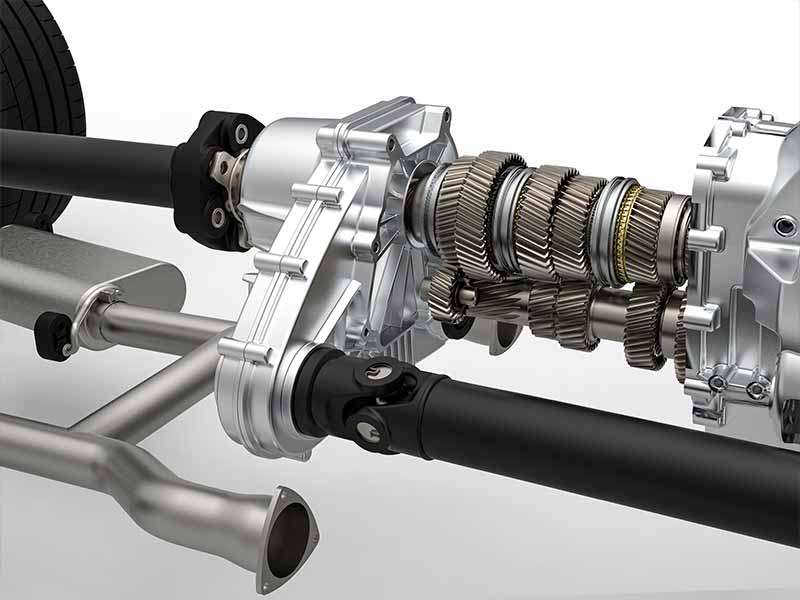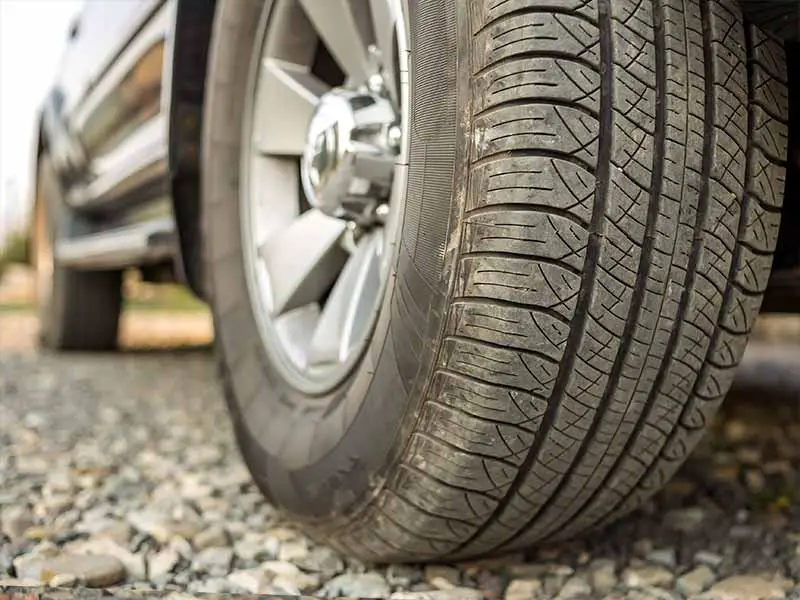Imagine this: You’re about to buy a car, and you’ve got a lot of choices. Color, make, model — but wait, what’s that about choosing between All-Wheel Drive (AWD) and Rear-Wheel Drive (RWD)? Isn’t driving just about stepping on the gas and turning the wheel? Turns out, the kind of wheel drive your vehicle has can make a big difference to your driving experience.
AWD Vs RWD
AWD offers better traction and stability, especially in slippery conditions, making it a good choice for off-roading and driving in adverse weather.
RWD offers better handling and is often faster certain situations, making it a top pick for high-performance cars and racing.
In this article, we’ll explore the mechanics of All-Wheel Drive and Rear-Wheel Drive, delve into their advantages and disadvantages, and help you understand which might be the best choice for you, based on various factors such as speed, handling, weather conditions, and your specific needs as a driver.
Let’s take a closer look.

What is All-Wheel Drive (AWD)?
In an AWD system, power from the engine is distributed to both the front and rear axles, which in turn power all four wheels. It’s like having a team of horses, where all the horses (or in our case, wheels) pull together to move the carriage (or car). This gives your vehicle a strong grip on the road and makes it easier to handle in certain conditions.
Here’s a bit more detail about how it all works:
- Engine Power: The engine in your car generates power, just like the horses in our example.
- Transmission: The transmission is like the team leader of the horses. It decides how much power should go to which wheels.
- Front and Rear Axles: The axles transfer the power from the engine to the wheels. Think of them as the reins controlling the horses.
AWD Vehicles and Their Uses
AWD systems are common in many types of vehicles including SUVs, trucks, and even some sporty cars, referred to as AWD vehicles or AWD cars. These types of vehicles can be great for handling different road and weather conditions. For example:
- Snowy or Slippery Roads: The all-wheel drive shines when the road gets slippery or snowy. When all four wheels are pulling together, it’s easier for your car to keep its grip, even when the road is slick.
- Off-Road Adventures: If you’re a fan of going off the beaten path, an AWD vehicle can be your best friend. It’s excellent for tackling gravel, mud, or steep hills.
The All-Wheel Drive System: A Balancing Act
One of the cool things about the AWD system is how it balances power between the front and rear wheels. Some AWD systems can even change how much power they send to each wheel depending on the conditions. This is sometimes referred to as ‘torque steer’.
For example, if your front wheels start to slip, the AWD system might send more power to the rear wheels to help keep your car stable. It’s like if one of the horses in our team starts to get tired, the team leader (the transmission) might ask the other horses to pull a bit harder.
But there’s a downside to this. All this power sharing can lead to lower gas mileage compared to vehicles with a two-wheel drive system. This is something to keep in mind when considering an AWD vehicle.

Advantages and Disadvantages of AWD
Choosing a car with All-Wheel Drive (AWD) can feel like a big upgrade. When all four wheels work together, it can make your drive smoother and safer, especially in some tricky situations. But, just like everything else, AWD has its ups and downs. Let’s dig into the details.
Advantages of AWD
AWD systems come with a bunch of perks that can make your driving experience better, especially in certain conditions. Here are some of the top benefits:
- Better Traction: Because all four wheels are working together, AWD vehicles usually have better traction. This means they can handle slick or uneven roads more easily. If you’ve ever tried to walk on a slippery surface, you’ll know how important it is to keep your balance. It’s the same idea with AWD.
- Improved Acceleration: AWD vehicles can also accelerate better. Imagine if you were trying to push a heavy box. It’s much easier if you have friends helping you, right? It’s the same with AWD. When all four wheels are powered, your car can get going faster.
- Off-Road Capability: If you’re an adventure seeker who loves to go off-roading, AWD is a must-have. With all four wheels pulling together, your vehicle can tackle rough or steep terrain more effectively.
Disadvantages of AWD
But just like a coin has two sides, AWD systems have their drawbacks too. Here are some things you might want to consider:
- Reduced Fuel Economy: Because the engine has to work harder to power all four wheels, AWD vehicles can use more fuel. This means you might find yourself at the gas station more often. It’s like if you were running a race. You’d get tired quicker if you sprinted the whole way, right? It’s the same idea with your car’s engine.
- Increased Maintenance: AWD systems have more parts, which means there’s more that can wear out or need fixing. While these systems are generally very reliable, when repairs are needed, they can be more expensive.
- Potential for Torque Steer: ‘Torque steer’ is when your vehicle pulls to one side when you’re trying to go straight. This can happen when the power isn’t evenly distributed between the wheels. While many AWD systems are designed to manage this, it’s still something to keep in mind.
AWD in Racing: Faster or Slower?
While AWD can improve acceleration (especially on slippery surfaces), it doesn’t necessarily mean your car will have a higher top speed. In fact, many high-speed sports cars use Rear-Wheel Drive instead. This is because while AWD is great for getting going, it doesn’t always help when it comes to maxing out your speed.
Plus, the extra weight of an AWD system can sometimes slow a car down. It’s like if you were running a race. You might be slower if you had to carry a heavy backpack, right? It’s the same idea with cars.

What is Rear-Wheel Drive (RWD)?
Unlike All-Wheel Drive, where all four wheels are powered at the same time, in a Rear-Wheel Drive system, only the rear wheels are powered by the engine. It’s like having two horses at the back of your carriage pulling it along, while the front two just go along for the ride.
Here’s a little more detail:
- Engine Power: Like all cars, the power starts with the engine. It’s like the muscles in your body.
- Transmission: This is the controller. It decides how much power goes to the wheels.
- Rear Axle: The rear axle gets the power from the transmission and sends it to the rear wheels, which then turn and move your car forward.
The Uses of RWD Vehicles
Rear-Wheel Drive systems are common in many types of vehicles, but especially in sports cars and larger trucks or vans. That’s because RWD has some special features that can make these vehicles perform better:
- Sports Cars: Sports cars often use RWD because it can help with balance and handling. Plus, it can make the car feel more responsive when you’re driving at high speeds.
- Trucks and Vans: Larger vehicles like trucks and vans often have RWD because it can handle heavy loads better. When you put a lot of weight in the back of a vehicle, it can help push the rear wheels down, giving them better grip and making it easier to move the load.
Advantages and Disadvantages of RWD
When we talk about Rear-Wheel Drive (RWD) vehicles, we’re diving into a world where the power and performance of your car can really shine. Whether it’s for racing or just a regular drive, RWD vehicles have some specific pros and cons. Let’s explore.
Advantages of RWD
Choosing a vehicle with Rear-Wheel Drive comes with a few important perks. Here’s what you might love about RWD:
- Better Balance: With RWD, the weight of your vehicle is more evenly distributed, which can improve balance and handling. Think about carrying a heavy backpack. If you distribute the weight evenly, it’s easier to carry, right? It’s the same idea with cars.
- More Power: RWD is often seen in high-performance cars, like sports cars, because it can handle a lot of horsepower. If you like speed, a RWD car might be for you.
- Towing Strength: If you’re hauling heavy stuff, RWD vehicles are a great choice. The weight of the load pushes down on the rear wheels, which increases their grip and makes it easier to pull the weight.
Disadvantages of RWD
However, RWD isn’t for everyone. Here are some things that might make you reconsider:
- Less Traction in Bad Weather: RWD cars can be a little tricky to handle in bad weather. If the roads are wet or icy, a RWD vehicle might slip more easily than an AWD one.
- More Complex to Drive: Because of the way RWD cars handle, they can be a little harder to drive, especially at high speeds. They can also spin out more easily if you’re not careful.
- Potentially More Expensive: RWD systems can be a bit more expensive to repair than other systems. That’s because the parts are often more specialized, especially in sports cars.
RWD and Cornering: A Match Made in Heaven?
One area where RWD vehicles really stand out is cornering. When a car goes around a corner, it shifts its weight to the outside. If you’re in a RWD car, this weight shift pushes down on the rear wheels and can actually help you grip the road better. It’s a bit like leaning into a turn when you’re riding a bike.
So, is RWD better for racing than AWD? In some cases, yes. Many professional racers prefer RWD vehicles, especially on dry tracks. But remember, it really depends on the specific conditions and the type of racing.

Comparing AWD and RWD: Which is Better?
Now that we’ve broken down what All-Wheel Drive (AWD) and Rear-Wheel Drive (RWD) are, and their respective pros and cons, which one is better? The answer isn’t that simple. It really depends on your specific needs and driving conditions. Let’s dive deeper.
AWD vs RWD: Speed and Performance
When it comes to speed, many might think that AWD, with all its wheels pulling together, would automatically be faster. However, that’s not always the case.
- Acceleration: AWD vehicles usually have better acceleration, especially in slippery conditions, because all four wheels are working to get the car moving. But, keep in mind, while an AWD vehicle may get up to speed quicker, it doesn’t necessarily mean it has a higher top speed.
- Top Speed: On the other hand, many high-speed sports cars use RWD. This is because, while the AWD is great for getting you going, it doesn’t always add to the top speed of the car. Plus, the added weight of an AWD system can slow a car down a bit.
AWD vs RWD: Handling and Control
Another big factor to consider is how each type of vehicle handles, especially when cornering.
- AWD Handling: AWD vehicles have better grip overall, which can be a major advantage in slippery conditions or when you’re off-roading. AWD vehicles also have something called ‘torque steer’, where the power can be shifted to the wheels that need it the most. This can be helpful for maintaining control in challenging driving conditions.
- RWD Handling: RWD vehicles, on the other hand, often have better balance and can be more responsive, especially when cornering at high speeds. This is because the weight of the car is distributed more evenly, which can give the driver more control.
AWD vs RWD: Efficiency and Cost
Finally, it’s worth considering the fuel economy and maintenance costs of AWD and RWD vehicles.
- Fuel Economy: AWD vehicles usually have lower gas mileage because the engine is working harder to power all four wheels. If fuel efficiency is a major factor for you, this is something to keep in mind.
- Maintenance and Repair: Both AWD and RWD vehicles can be more expensive to maintain and repair than vehicles with a two-wheel drive system, simply because they have more moving parts. That said, specific costs can vary depending on the exact make and model of the vehicle.
Neither AWD nor RWD is universally “better” — it all depends on your specific needs and circumstances. If you regularly drive in slippery conditions or you’re often off-roading, an AWD vehicle might be your best bet. But if you’re looking for a vehicle that’s fun to drive and delivers high performance, especially in terms of speed and handling, a RWD vehicle could be the perfect choice.
Resources
Below are some links you may find helpful when learning about tires
- Fwd vs. rwd vs. awd: Drivetrain layouts and what they mean – DigitalTrends
- Awd vs. rwd – Just how much quicker is one compared to the other? – AutoEvolution
Final Thoughts
All-Wheel Drive (AWD) gives you the power in all four wheels, offering more traction and better control in slippery conditions, ideal for off-roading and snowy roads. On the other hand, Rear-Wheel Drive (RWD) powers only the rear wheels, giving your vehicle better balance, higher responsiveness, and often a higher top speed, making it a popular choice for sports cars and racing enthusiasts.
The key to making the best decision? Consider your specific driving needs, your environment, and what you value most in your driving experience. There’s no one-size-fits-all answer to whether AWD or RWD is better – it all comes down to you, your car, and where you’re headed.
Good luck and happy motoring.




